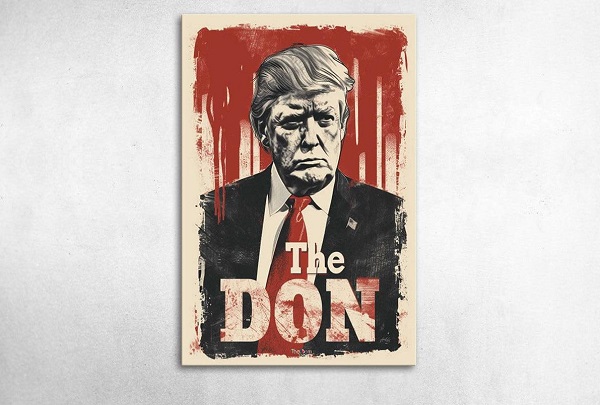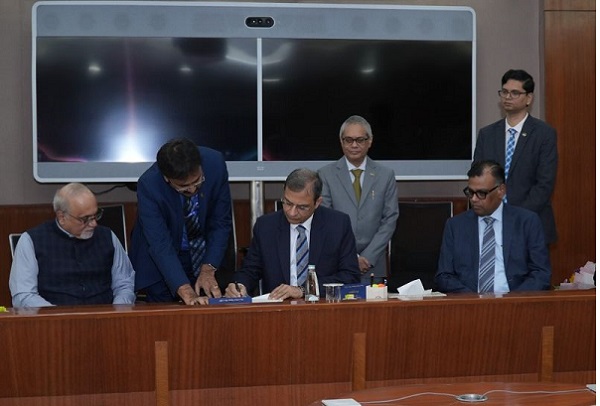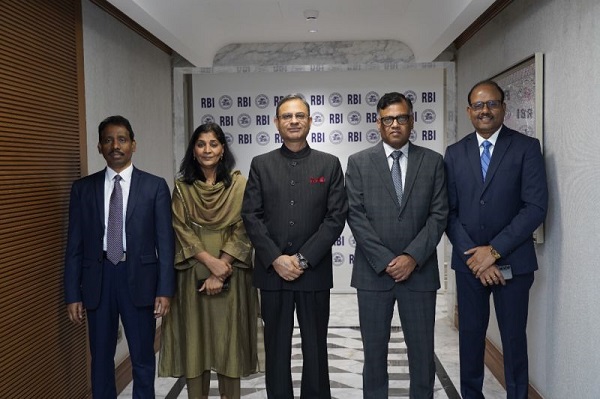.png)
Tata Or Batata? Nilesh Shah Lays Out India’s Market Mindmap
From HFT to FDI, inflation myths to rupee truth, Nilesh Shah maps India’s market future—in metaphors only he can mint.

June 26, 2025 at 4:29 AM IST
What’s common between high-frequency trading, Chinese hospitals, and Kodak film rolls? In Nilesh Shah’s world, they all make an appearance in India's financial narrative.
In this sharp, unscripted conversation with market veteran Manoj Rane for BasisPoint Insight’s Market Makers, Nilesh Shah, MD & CEO of Kotak Mutual Fund and member of the Prime Minister’s Economic Advisory Council, unpacks the tensions and transformations in India’s markets with characteristic wit and wisdom. Whether it’s India’s Chakravyuh-like approach to capital flows, or the open-arms welcome to high-frequency traders (“fair-weather friends”), Shah’s core message is clear: India must choose its guests wisely.
“Why are we letting them make money at the cost of retail investors?” he asks of algorithmic traders. On foreign direct investment, he offers a provocative contrast with China: “Take your money out of China, you can’t re-enter. We must learn something from that.”
His framework blends strategic statecraft and market pragmatism, particularly in the wake of Operation Sindoor, India’s bold cross-border strike. “If we become 20 times bigger than Pakistan, even their backers will think twice,” Shah notes, making the case for a pro-growth bias in monetary policy. He defends the RBI’s rate cuts and liquidity stance, while urging better inflation measurement and more risk-taking in regulatory design.
As always, Shah’s genius lies not just in analysis, but in language. Policymakers, he says, must keep “the carrot ahead,” because “if you give everything upfront, the market stops moving.” The real hurdle to bond market development? A legal system mired in “tarikh pe tarikh.” Why is corporate credit so concentrated? Because you either lend to “Tata or Batata.”
With topics ranging from interest rates and FDI policy to equity valuations and rupee management, this wide-ranging interview is a masterclass in market storytelling.
The full conversation is available on BasisPoint’s YouTube channel, and the lightly edited Q&A follows below.
Q: What’s your view on the RBI’s recent rate cuts and the yield curve?
A: Manoj Bhai, I believe that post-Operation Sindoor, a clear message of pro-growth has gone across the ecosystem. Today, India is 11 times bigger than Pakistan. There are countries that continue to support Pakistan, but if we grow to 20 times their size, even those countries will have to think twice. In that context, our policies must now be aligned with a growth vision. The RBI began by ensuring liquidity well into the next calendar year—if not the next financial year—and followed up with a jumbo rate cut of 50 basis points. Yes, they shifted to a cautious stance, but when they sensed that this might spook the markets, they calmed nerves by saying they remain data-driven.
SEBI, on its part, is also taking several proactive steps. RBI has relaxed guidelines on gold loans and infrastructure financing as well. So overall, we are clearly looking at a pro-growth mindset. That doesn’t mean inflation will be ignored, but support will come—whether through liquidity enhancement, interest rate cuts, or calibrated provisioning relaxations.
In that background, I believe we still have room for one or two more rate cuts. Liquidity is more than adequate. All of this could help bring the yield curve down—at the short end, long end, and everything in between. The only real anchor to our curve is what’s happening in the US. We’ve seen days when our 10-year yield was at 4.95% and the US 10-year was at 4.5%. Even now, with a 45-basis-point spread, our bonds remain attractive. So I’d bet on at least one or two more cuts, and a softening yield curve across tenors.
Q: What should be India’s long-term neutral policy rate?
A: We have to start by presenting the right inflation picture. Today, in the CPI basket, food accounts for almost half. But if you go by the RBI’s household expenditure survey, food actually makes up only about 35–40%. And since food inflation is running higher than core inflation, that extra weightage means we’re overstating overall inflation by 40–50 basis points.
Second, in the Western world, they adjust inflation for improvements in features and productivity. We, on the other hand, treat black-and-white TVs and colour TVs the same. So first, we must improve how we measure inflation to reflect today’s India—its actual spending pattern and consumption habits. Only then can we determine the right inflation target. Is 4% cast in stone? The answer is no. Eventually, we should aim to bring it lower, more in line with what developed economies target and deliver.
Q: Should policy communication be transparent or purposefully ambiguous?
A: It’s better to keep the carrot ahead. If you hand everything out at once, the market stops moving. Markets buy on rumour, sell on fact. As long as there’s a sense of possibility of more to come, the market remains active. Give clarity, yes, but not finality.
Q: Are credit spreads fair, and how can we improve corporate bond liquidity?
A: My first suggestion is straightforward: Strengthen the rule of law. In the debt market, return of principal matters far more than return on principal. But even in big cases like IL&FS, YES Bank, or Dewan Housing Finance, investors have no idea when or how much of their money will come back. It’s all tarikh pe tarikh, tarikh pe tarikh. In such an environment, everything grinds to a halt. The debt market simply cannot take off unless investors can price risk properly. And in the absence of that clarity, people price infinite risk—which is why they either lend to Tata or don’t lend to Batata.
The second issue is secondary market liquidity. For that, you need both buyers and sellers. In India, we only get buyers when interest rates are falling, and sellers when rates are rising—but rarely do we have both at once. Can we create a more structured segmentation? Insurance and pension funds are naturally long-duration investors, but they also hold three-month CPs, one-year residual bonds, three-year paper.
Why can’t we allow pension funds and provident funds to sell shorter-maturity bonds? Today, we tell them they can sell only when a bond is downgraded. Downgrade ko chhodiye—let them sell short-duration paper freely. Anyway, most of these institutions run short ALM positions. There’s no regulatory restriction on insurers, but they still don’t actively trade short-term bonds.
We need to give these institutions the confidence that it’s perfectly fine—regulatorily and operationally—to trade and even make money doing so. We must create active buyers and sellers, and provide assurance that even if they go wrong, a defined recovery framework is in place. Only then can they assess the real downside and participate meaningfully in the market.
Q: Why hasn’t retail taken to debt the way it has with equities?
A: There’s no market culture around debt. The product isn’t visible, and there’s little price discovery. At issuance, there’s often no appetite for long-duration paper, so issuers don’t create it. The biggest holders—LIC and public banks—don’t trade actively. They hold bonds to maturity, which prevents retail from seeing price or value. Without a secondary market and credible pricing, retail participation will stay low.
Q: Has regulation stifled innovation in credit markets?
A: Do we really need to encourage innovation? Of course, and to be fair, regulators have encouraged it. It’s not that they haven’t. We’ve seen innovations like REITs, performing credit funds, and AIFs. But the problem lies in the expectations placed on regulators—that there should be zero accidents. Arre bhai, agar aap traffic badhayenge, toh accident toh honge hi! You can’t judge a regulator by whether they’ve prevented every accident. You have to judge them on what they did after the accident. Did they clean up the road? Did the ambulance arrive?
When expectations are mismatched—when we want innovation but also zero risk—the regulator will naturally slow down traffic. And yes, lesser traffic means fewer accidents. But that’s not the goal. We need to create optimum traffic, even if it means an occasional accident. That’s how sustainable innovation happens.
Q: What’s your outlook on the rupee in the near term?
A: In the short to medium term, you have to figure out which side the RBI is managing. Our markets may be notionally free to move wherever they want, but in reality, they operate within boundaries set by the RBI. And boundary ke baahar jaayein toh bada jhatka lagta hai.
So the key is to understand those invisible lines—and play within them. With $700 billion in reserves, and the ability to short $70–80 billion in the forward market, there's no point trying to defy the system. Bhagwan ne jo boundary banayi hai, ussi mein khelo.
Q: And over the long term?
A: Over the longer term, though, I still believe the Indian rupee will continue to depreciate. Even if we match our global trading partners on inflation, the productivity gap remains. Yes, we’ve improved in power, ports, and telecom, but the broader business process is still cumbersome.
China saat din mein hospital bana sakta hai. Hum saat din mein hospital ka naam bhi shayad na rakh paayein. That kind of productivity differential ensures that the rupee will continue to weaken. The extent of depreciation may reduce over time, but structurally, expect low single-digit depreciation on a sustained basis.
Q: What’s your view on the fall in FDI last year?
A: So Manoj Bhai, hum log ek Chakravyuh bana dete hain—jahaan aana aasaan hota hai, lekin jaana mushkil. Or worse, once you’re in, you never leave. Now, on paper, we are an open economy. Anyone who enters should be free to exit. But let’s also learn from China. If you take money out of China, good luck trying to get back in.
We must ensure that legitimate capital—the kind that creates jobs and long-term investment—has free two-way access. But if you’re just a short-term trader riding Indian volatility, there should be consequences. For instance, high-frequency traders are pulling billions of dollars in and out. Hum unko Athithi Devo Bhava keh rahe hain? These are fair-weather friends. The day they stop making money, bhag jaayenge sab ke sab.
Why are we letting them profit at the cost of India’s retail investors? Make life a little tougher for them. Impose a higher tax. So yes, we need to be more selective about the kind of capital we welcome—and the kind we allow to walk away with profits. HFT capital should be discouraged, penalised, and taxed heavily. But pure foreign direct investment? That we should roll out the red carpet for.
Q: Should FPI tax arbitrage be addressed?
A: If you're an FPI coming from places like the Netherlands, South Korea, or France, you pay zero tax. If you're an NRI investing from Singapore, Dubai, or similar jurisdictions, again, no tax. Why are we offering these incentives?
Let there be a level playing field between domestic and foreign investors. At $700 billion in reserves, we’re not desperate for this money. We don’t need to bend over backwards. Our own investors shouldn’t be at a disadvantage in their own market.
Q: Equities have swung sharply this year. How do you read the market?
A: Our equity market right now is like someone with an average body temperature—except one leg is in boiling hot water, and the other in ice-cold water. Domestically, gaadi theek-thaak chal rahi hai. Inflation is low, liquidity is ample, and interest rates are heading down. Earnings growth is healthy, GDP growth will be in mid-single digits, the current account is under control, the rupee is stable, and the long-term growth story is intact.
There’s a clear pro-growth message from policymakers, so one can’t complain. If there’s anything to critique on the domestic front, it’s valuations—but that’s always in the eye of the beholder.
The real challenge is global. Trump sahab—Don ko samajhna mushkil hi nahin, namumkin hai. With Israel and Iran, sometimes it looks like a fixed match, sometimes not—I honestly don’t understand it anymore. So yes, globally there’s uncertainty, and that could create temporary pressure on our markets.
But even if such pressures arise, the downside will be limited. Everyone wants to buy into bad news when it comes to India. HNIs, family offices, retail investors—they're all waiting for a correction to enter. Even FPIs want to load up on India during events like Operation Sindoor.
So my view is: find good entrepreneurs, bet on them, and stay invested. Don’t try to jump around or time the market. You’ll just end up missing the jungle for the wood.
Q: What’s your broader message on India’s growth prospects?
A: While things look promising for India, we cannot afford to become complacent. Growth cannot be taken for granted. There’s a massive wave of technological disruption happening globally. At the same time, we have over 1.44 billion people to feed and to provide meaningful jobs for. And let’s not forget—aspirations have changed.
Without slipping into complacency, we must stay on our toes and actively pursue double-digit growth. If we simply continue doing what we’re doing, we’ll end up with mid-single-digit growth. That’s not enough. All our policymakers—and all of us as Indians—must come together to create a decade of double-digit growth. That would transform India in ways we can’t even imagine today.
Q: Growth is the only path forward, especially given our job challenge.
A: Absolutely. We’ve leapfrogged the industrial economy and moved straight into services, but we still need to create jobs. And the only sustainable way to do that is to grow. Grow, grow, grow—otherwise we risk squandering our demographic dividend.
Q: Thank you, Nilesh. Wonderful as always.
A: Thank you, Manoj. Always a pleasure.



